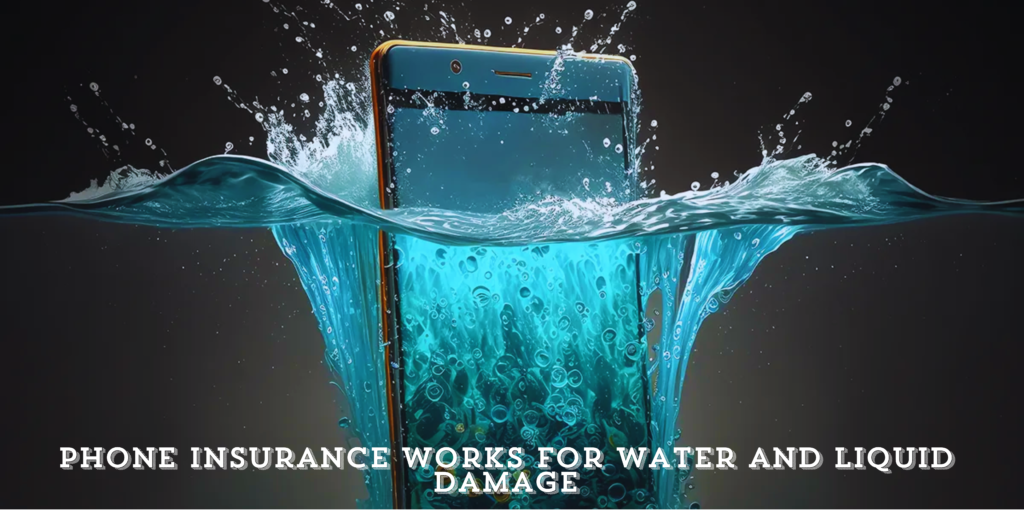Water and liquid damage are among the most common threats to mobile phones. From accidental spills to full submersion, such incidents can cause severe harm to your device. Fortunately, phone insurance offers peace of mind and financial protection against such risks. This blog explores how phone insurance works for water and liquid damage, what it covers, the claims process, and the key factors to consider when choosing a policy.
How Water and Liquid Damage Can Affect Your Phone?
Liquid damage can affect both internal and external components of your phone, often resulting in the following problems:
- Corrosion: Water can corrode metal parts of your phone, affecting its hardware and connectors.
- Short-circuiting: Moisture inside your phone can cause short-circuiting, which can damage internal components such as the battery, screen, or logic board.
- Display damage: Water can penetrate your phone’s screen, causing stains, discoloration, or rendering the touchscreen inactive.
- Audio malfunction: Water entering the speaker or microphone can cause the sound quality to deteriorate or it may stop working altogether.
Without proper insurance, repairing or replacing a water-damaged phone can be costly—sometimes as much as buying a new one.
What Does Phone Insurance Cover for Water Damage?
Most standard phone insurance policies cover accidental water or liquid damage. However, the extent of coverage varies by provider. Below are key points you should know:
- Repair Costs: Insurance typically covers the cost of repairing internal components like the motherboard, battery, or screen if damaged by water.
- Replacement: If the damage is beyond repair, the policy may provide a replacement device, usually of the same make and model or a comparable one.
- Deductible: Many policies require paying a deductible when filing a claim. The deductible varies based on the insurer and the value of the phone.
- Limitations: Some policies may not cover water damage if the phone was exposed to extreme conditions (e.g., submersion in saltwater or prolonged exposure to liquids).
Steps to Take When Your Phone Suffers Water Damage
If your phone gets wet, here are some immediate steps to minimize damage before filing an insurance claim:
- Turn off the device: Power down your phone immediately to prevent short-circuiting.
- Remove the battery (if possible): Take out the SIM card and any removable storage.
- Dry the phone: Wipe the phone with a soft cloth and place it in a bag of rice or silica gel to absorb moisture. Avoid using heat sources like hair dryers, as they may cause further damage.
- Avoid charging the phone: Do not plug in your phone until it is completely dry.
- Contact your insurance provider: Once you’ve taken steps to dry the phone, contact your insurance provider to begin the claims process.
How to File a Claim for Water or Liquid Damage?
Filing a claim for water damage is usually straightforward. Follow these steps:
- Report the incident: Contact your insurance provider and report the damage. Provide details about how the damage occurred and the current condition of the phone.
- Provide necessary documentation: Be prepared to submit proof of purchase, your policy number, and any other relevant documents.
- Damage assessment: The insurer may ask you to send the phone to an authorized service center to assess whether it can be repaired or needs replacement.
- Pay the deductible: Once your claim is approved, you may need to pay the deductible before the repair or replacement proceeds.
- Repair or replacement: If repairable, the insurer will arrange for the phone to be fixed. If not, they will send you a replacement.
Factors to Consider When Choosing Phone Insurance for Water Damage
Before choosing phone insurance, consider these factors:
- Coverage Limits: Ensure the policy covers repair or replacement costs for water damage. Some policies may have a maximum payout limit.
- Deductible: Compare deductibles across providers. A lower deductible may be more affordable in case of an accident.
- Exclusions: Check if the policy excludes specific types of water damage, such as saltwater exposure or negligence.
- Claims Process: Research how easy it is to file claims and how quickly repairs or replacements are processed.
- Replacement Options: Confirm if the insurance will replace your device with the same model or an equivalent device.
Common Exclusions in Phone Insurance for Water Damage
While most phone insurance covers water damage, some exclusions may apply:
- Pre-existing damage: If your phone was already damaged before purchasing the insurance, the policy may not cover additional water damage.
- Negligence: Insurers may deny claims if the damage occurred due to reckless behavior (e.g., intentionally submerging the phone).
- Unauthorized repairs: If you attempt to repair the phone yourself or take it to an unauthorized service center, your claim could be denied.
Best Practices for Preventing Water Damage
While insurance offers protection, prevention is always better. Follow these tips to avoid water damage:
- Use a waterproof case: Invest in a high-quality case to protect against accidental spills or submersion.
- Keep your phone away from water: Avoid using your phone near pools, bathtubs, or sinks.
- Avoid rain exposure: Store your phone in a water-resistant pocket or bag if you get caught in the rain.
- Backup your data: Regularly backup your phone to avoid losing important information in case of irreversible damage.
Conclusion
Phone insurance can be a lifesaver in the case of water and liquid damage. Understanding what your policy covers, how to file a claim, and what steps to take in the event of water exposure can help protect your device and avoid costly repairs or replacements. By choosing the right insurance provider and taking preventative measures, you can enjoy peace of mind knowing your phone is protected from unexpected water damage.
